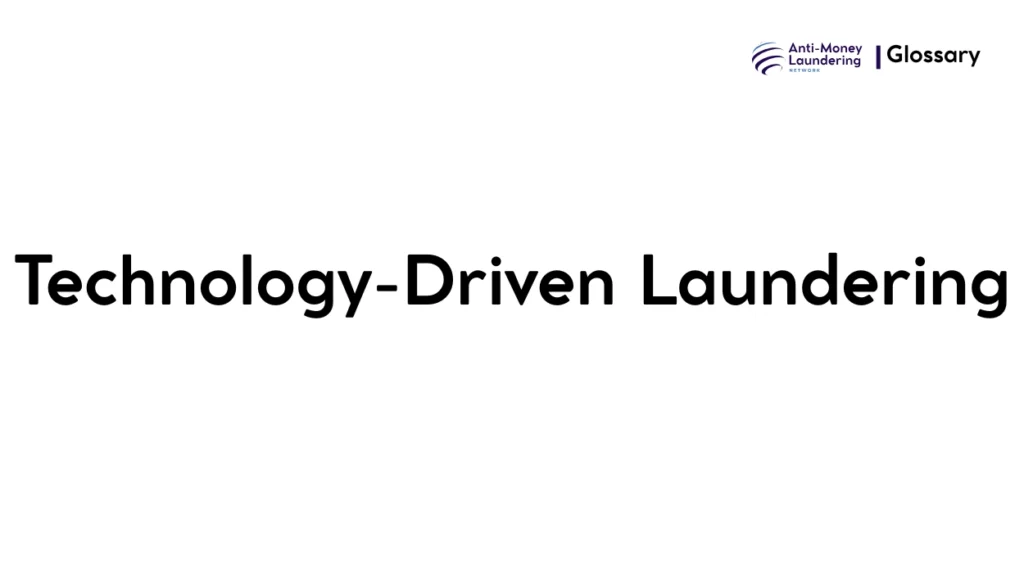Definition
Technology-Driven Laundering in Anti-Money Laundering (AML) refers to the sophisticated use of modern technologies by criminals to facilitate, disguise, or accelerate money laundering activities. It involves leveraging advancements such as digital payment platforms, cryptocurrencies, artificial intelligence, and other technological tools to obscure the origins of illicit funds and integrate them into the legitimate financial system.
Purpose and Regulatory Basis
Technology–Driven Laundering challenges traditional AML procedures by exploiting technological loopholes and creating complex laundering channels. Its significance lies in its potential to evade detection, thereby threatening financial system integrity and global security. Regulators worldwide, including the Financial Action Task Force (FATF), the USA PATRIOT Act, and the European Union’s Anti-Money Laundering Directives (AMLD), emphasize monitoring and mitigating technology-enabled laundering schemes to uphold compliance and protect economies.
When and How it Applies
Technology-Driven Laundering typically applies in scenarios where illicit actors leverage digital technologies to:
- Transfer funds rapidly across borders via cryptocurrencies or electronic wallets.
- Use automated bots or AI to mimic legitimate transaction patterns.
- Exploit emerging financial technologies (FinTech) platforms lacking robust AML controls.
Examples include layering funds through blockchain-based mixers or converting cash into digital assets to avoid traditional banking scrutiny.
Types or Variants
Technology-Driven Laundering manifests in various forms:
- Cryptocurrency Laundering: Using decentralized digital currencies to obscure money trails.
- Online Gambling Laundering: Exploiting virtual casinos to clean illicit funds.
- Automated Transaction Laundering: Employing AI or bots to generate complex transaction networks.
- Dark Web Laundering: Utilizing anonymizing technologies and darknet markets to transfer and integrate illegal proceeds.
Procedures and Implementation
Financial institutions must adopt multiple layers of controls to combat Technology-Driven Laundering:
- Implement advanced AML transaction monitoring systems with AI/machine learning capabilities.
- Conduct enhanced customer due diligence (CDD) focusing on technology usage profiles.
- Screen clients and transactions against updated sanction and watchlists, including digital asset identifiers.
- Collaborate with regulators to align procedures with the latest technology-related threats and compliance obligations.
Impact on Customers/Clients
From the customer’s perspective, enhanced AML measures mean increased scrutiny during onboarding and ongoing monitoring, especially if engaging with digital financial services. Customers may face restrictions such as transaction limits or additional verification steps designed to mitigate laundering risks while safeguarding their rights and privacy.
Duration, Review, and Resolution
AML controls addressing Technology-Driven Laundering require continual review and adjustment. Institutions typically schedule periodic risk assessments and audit compliance programs to remain responsive to emerging techniques. Remediation actions follow alerts on suspicious activity, which must be promptly reported to authorities.
Reporting and Compliance Duties
Organizations are obligated to document all AML measures relating to technology-driven risks, ensure personnel training on evolving laundering methods, and file timely Suspicious Activity Reports (SARs). Failure to comply can result in regulatory penalties, reputational damage, and legal consequences.
Related AML Terms
Technology-Driven Laundering intersects with concepts such as Transaction Monitoring, Know Your Customer (KYC), Cryptocurrency Compliance, Enhanced Due Diligence (EDD), and Financial Technology (FinTech) regulation.
Challenges and Best Practices
Key challenges include rapidly evolving laundering techniques, data privacy concerns, and balancing automation with human oversight. Best practices encompass investing in cutting-edge AML technology, fostering cross-sector collaboration, continuous staff training, and maintaining regulatory dialogue.
Recent Developments
Recent trends feature the integration of artificial intelligence and machine learning in AML systems, regulatory focus on virtual assets and digital wallets, and international efforts to enhance blockchain tracing and transparency.
Technology-Driven Laundering poses complex risks that demand proactive, technology-enabled AML compliance. By understanding and addressing these risks, financial institutions can safeguard their operations, maintain regulatory adherence, and contribute to the global fight against financial crime.

